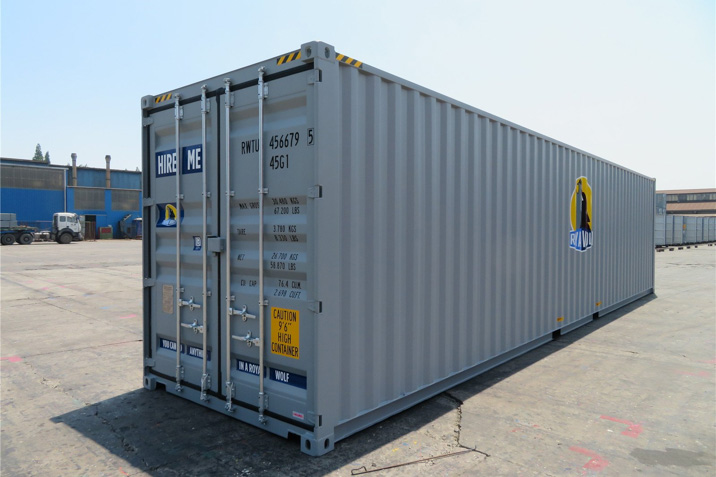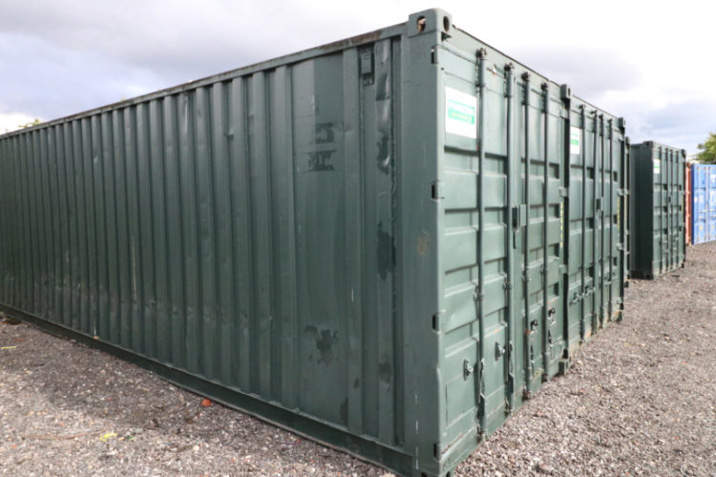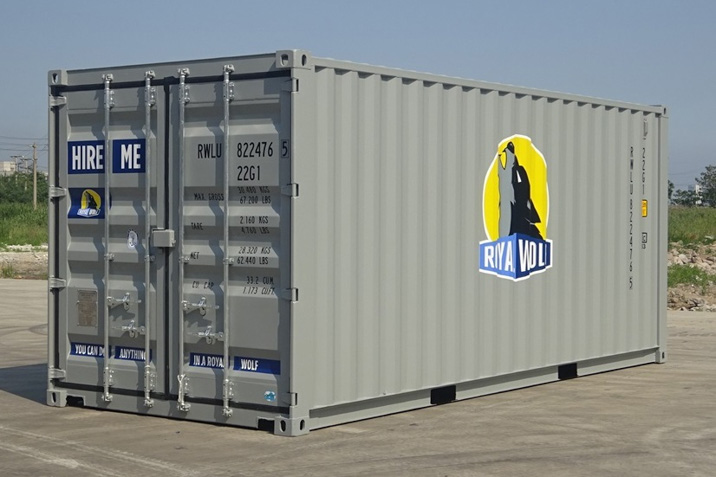What are the sizes of shipping containers in Australia?
There are three standard shipping container sizes in Australia: 10ft, 20ft, and 40ft. The height, width and length of the shipping container matters greatly as the internal size will determine how much you can fit inside the container. Pay attention to both the external and internal measurements when purchasing a shipping container as one does not necessarily indicate the other.
Standard shipping container dimensions
Shipping container measurements are fairly standard throughout Australia and you will find little variation. This is because standardized shipping containers are necessary to ensure the flow of trade and safe transport of goods.
Over sea container dimensions are also very similar in size. This is because about 95% of all intermodal containers are constructed in accordance with the ISO standards. Most international shipping containers are either 20 or 40 feet long (6.10m or 12.19m) and 8 feet wide (2.44m). The standard height for a shipping container across the world is either 8’6 (2.59m) or 9’6 (2.90m).
Custom-sized shipping containers are very difficult to come by as the standard sizing is so universal. It is much easier, cheaper, and quicker to purchase a standard size container than search for a custom shipping container.
However, some companies will modify pre-existing shipping containers in accordance with your desires. Cbox containers offers modifications that will give you the freedom to alter your shipping container before its arrival. These modifications include paint jobs, cutting doors or windows, insulating, connecting electricity and plumbing, and converting it into a home studio. If you have something a little more specific in mind, try contacting them here to see what they can do.
Before you buy: how big are shipping containers?
The cubic volume of a shipping container is dependent on its internal measurements. These are in tern dependant on the shipping container sizes. Before a purchase, you need to make sure you understand how wide are shipping containers and their internal dimensions. To do this, determine the type of shipping container (eg. 10ft, 20ft, 40ft) and consult the charts below.
Standard EXTERNAL dimensions for shipping containers Australia
|
Container type
|
Length (ft)
|
Width (ft)
|
Height (ft)
|
|
10
|
10
|
8
|
8’6
|
|
20
|
20
|
8
|
8’6
|
|
40
|
40
|
8
|
8’6
|
Standard INTERNAL dimensions for shipping containers Australia
|
Container type
|
Length (m)
|
Width (m)
|
Height (m)
|
Cubic capacity (m3)
|
|
10
|
2.98
|
2.55
|
2.38
|
14.5
|
|
20
|
5.90
|
2.35
|
2.38
|
33.2
|
|
40
|
12.09
|
2.35
|
2.38
|
67
|
How much does a shipping container weigh?
Shipping container weights are very important for the purposes of travel. Weight is calculated a few different ways.
1. Tare weight
Tare weight is also known as unladen weight. It refers to the weight of an empty unit – in this case, the empty shipping container. Tare weight is a concept that is used in a number of fields including baking ( e.g. measuring the container before measuring the weight of an ingredient and subtracting) and manufacturing cars.
2. Gross Weight
This is the total weight of the shipping container including all of the goods but excluding the weight of the container itself (the tare weight).
3. Maximum gross weight
The maximum gross weight refers to the capacity limit of the container. It varies depending on the container type and strength.
Standard shipping container weight measures
|
Container type (ft)
|
Tare weight (kg)
|
Maximum gross weight (kg)
|
|
10
|
1,200
|
10,160
|
|
20
|
2,300
|
24,000
|
|
40
|
3,750
|
30,480
|
Understanding shipping container types: Overview
40ft containers

40 foot shipping containers are the largest size available. They are usually only used for heavy industrial purposes. 40 ft shipping containers are also available to rent, which is a much more common practice than purchasing unless you regularly need to transport large volumes of product or store many bulky items.
40 foot shipping containers are used for a variety of things. Their size makes them desirable for more than just shipping. Common uses of 40 foot container applications include
- Long term storage
- Transportation
- Garages
Another option for large shipping containers like these is to convert them into homes. Many Australians are embracing the shipping container look and building properties out of multiple shipping containers constructed together. For more information on these homes and how they work, see here.
Read more about 40 foot shipping containers here from SCF.
30ft containers

30 foot shipping containers are difficult to find because they are not the standard. However, they are a great middle ground between the 20 and 40 foot sizes. 30 foot containers are best suited to home improvement and residential use as their nonstandard dimensions may complicate commercial transport or storage.
Examples of uses for a 30ft container include home storage units, sheds, pools, home offices, and guest flats. Read more about 30 foot frame shipping containers and the type of options available here.
20ft container dimensions

20 ft containers are the most common. They are very versatile and can be repurposed beyond storage and shipping for extra rooms or small pools. They are affordable and can be available for less than $17,000. The typical dimensions for a 20ft container are 3.10m long x 2.44m wide x 2.59 m tall (259 in cm). Quality suppliers are easy to come by when searching for a standard 20ft shipping container. Read about the best shipping container brands and manufacturers in Australia here.
10ft

10 ft is the smallest shipping container size. It is also the cheapest and easiest to transport. 10ft shipping containers can be used for a variety of things. They are light and more portable than their larger counterparts, making them a more practical choice for transporting small goods.
10ft shipping containers have also become popular in the holiday home business. With the rise of tiny homes nationwide making homeowners reconsider just how much space they actually need, shipping container homes have taken off as tiny home holiday houses. Tiny homes are extremely popular on Airbnb, with many offering luxurious views in extravagant locations. Read more about the best tiny homes on Airbnb Australia here.

